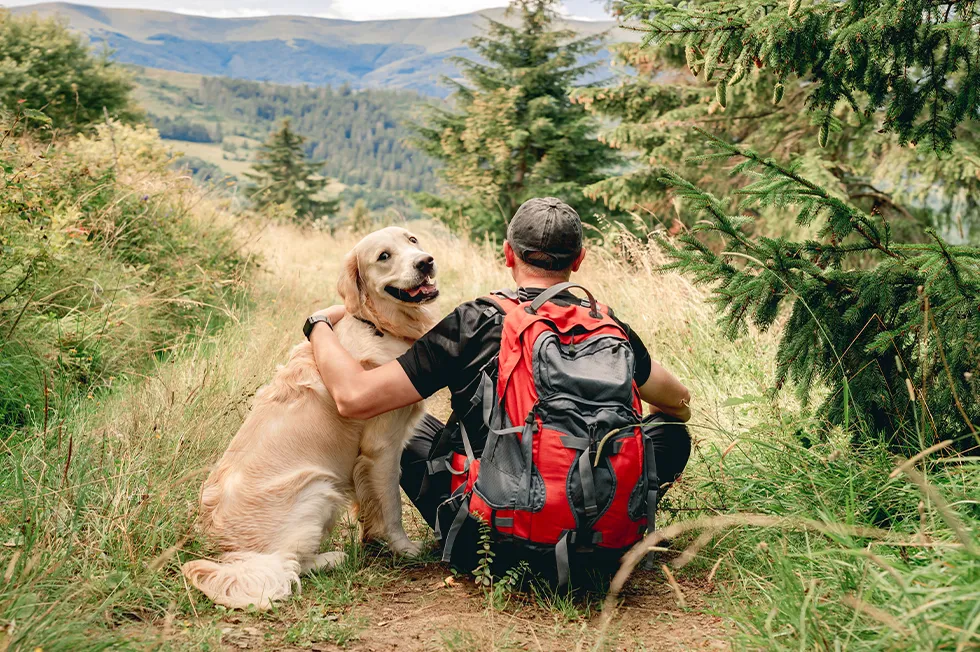Learning how to hike with your dog is one of the best ways to enjoy the outdoors, get fit, and build a stronger bond with your furry companion. But taking your dog on the trail requires more than just grabbing a leash and heading out the door. Proper preparation ensures your hike is safe, fun, and beneficial for both you and your dog. This guide from the National Park Shops will walk you through everything you need to know, from essential gear to age guidelines and safety strategies.
By following the advice in this comprehensive article, you’ll not only know how to hike with your dog the right way, but you’ll also prevent common mistakes that could risk your dog’s health or cause stress on the trail. Let’s begin with what you need to prepare.
What to prepare for your dog on the trail?
Before you hit the trail, it’s essential to assess your dog’s individual characteristics to determine what kind of hike is appropriate. Learning how to hike with your dog starts with evaluating their breed traits, physical conditioning, age, and any existing health concerns. For example, flat-faced breeds like pugs may struggle in hot weather, while working breeds like border collies thrive on longer, more active routes. Not all dogs are suited for the same trail conditions, so you’ll need to consider distance, elevation gain, trail surface, and expected climate.
Basic obedience training is a must. Your dog should reliably respond to commands like “come,” “stay,” and “leave it,” as these can be crucial for avoiding hazards. Pack essentials such as a leash, ID tags, water, food, and waste bags. Ensure all vaccinations, flea/tick prevention, and microchipping are current, especially if you plan to venture into wooded or remote areas. Understanding how to hike with your dog also means being equipped to handle unexpected challenges, from sudden weather changes to minor injuries on the trail.
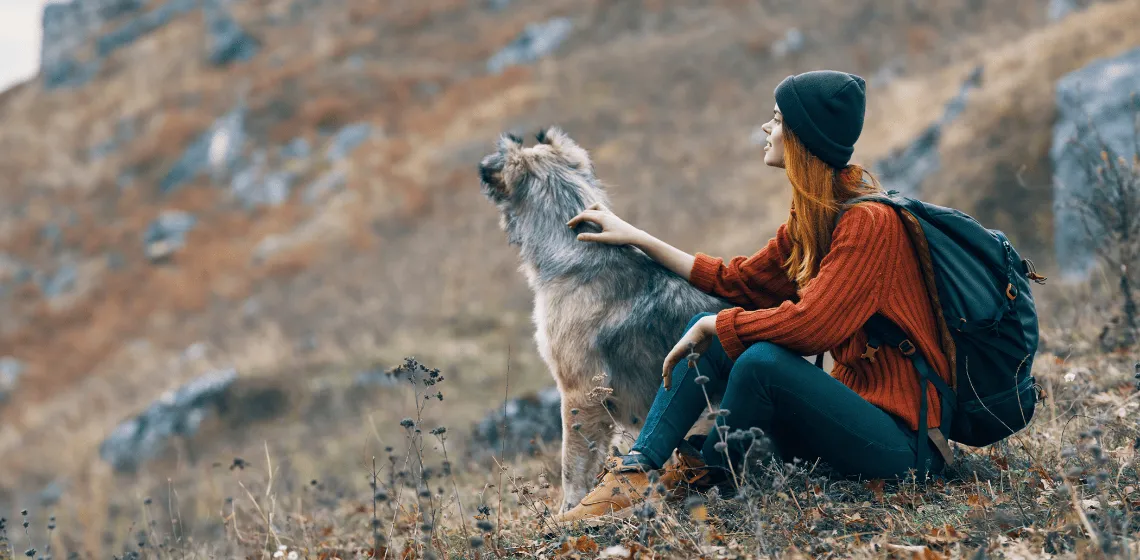
Essential Hiking Gear for Your Dog
Investing in quality equipment is one of the most crucial parts of learning how to hike with your dog. The right gear ensures comfort, safety, and practicality during every step of the journey. Below are the core essentials to keep your dog safe and happy.
Leash, Collar, and Identification
A sturdy leash and well-fitted collar are non-negotiable for any hike with your dog. They are the first line of control and safety, ensuring your dog remains close, visible, and under your command, particularly in areas with wildlife or steep drop-offs. To truly understand how to hike with your dog, start by choosing a durable, non-retractable leash, ideally one made of weather-resistant material with reflective stitching for enhanced visibility. The collar should sit securely on your dog’s neck with enough room for two fingers to fit underneath, and it must carry up-to-date ID tags with your contact details.
For improved comfort and control, especially on uneven terrain or longer treks, consider switching to a padded harness. A harness distributes pressure more evenly across the chest and reduces strain on the neck. Adding a GPS tracker or ensuring your dog is microchipped adds another layer of protection in case you get separated. These foundational tools are essential when learning how to hike with your dog responsibly and confidently.
Hydration and Food Supplies
Proper hydration and nutrition are essential components of any well-planned outdoor activity, especially when learning how to hike with your dog. Dogs do not sweat like humans, so they rely on panting to regulate body temperature, making them more vulnerable to dehydration. Always bring more water than you think you’ll need, and offer it frequently using a collapsible bowl or dog-specific dispenser. These portable solutions ensure your dog stays hydrated without unnecessary hassle.
On hikes lasting more than an hour, include a portion of your dog’s regular food and energy-dense treats. Choose treats that are lightweight, non-perishable, and rich in protein to replenish calories burned on the trail. Use them strategically to maintain energy levels and reinforce good behavior. Staying ahead of your dog’s hydration and caloric needs is fundamental to knowing how to hike with your dog safely and effectively.
Protective Gear and First Aid
Depending on the terrain and weather conditions, your dog may require specific protective gear to stay safe and comfortable on the trail. Booties are especially helpful for guarding against rough or abrasive surfaces, such as rocky paths, hot pavement, or icy trails. They prevent cuts, burns, and excessive wear on paw pads, making them an important asset when planning how to hike with your dog. Lightweight jackets offer protection against cold winds and rain, especially for short-haired or senior dogs, while dog goggles can shield sensitive eyes from dust, debris, and bright sunlight in exposed environments.
Equally important is a well-stocked canine first aid kit. This should include essentials like antiseptic wipes, bandages, gauze pads, tweezers for splinter or tick removal, and paw balm. Also consider packing an emergency blanket and a pet-safe antihistamine in case of allergic reactions. It’s not enough to carry the kit, you should also be familiar with how to use each item effectively. Whether you’re hiking near home or in remote wilderness, having the right protective gear and first aid knowledge is key to confidently navigating how to hike with your dog in any condition.
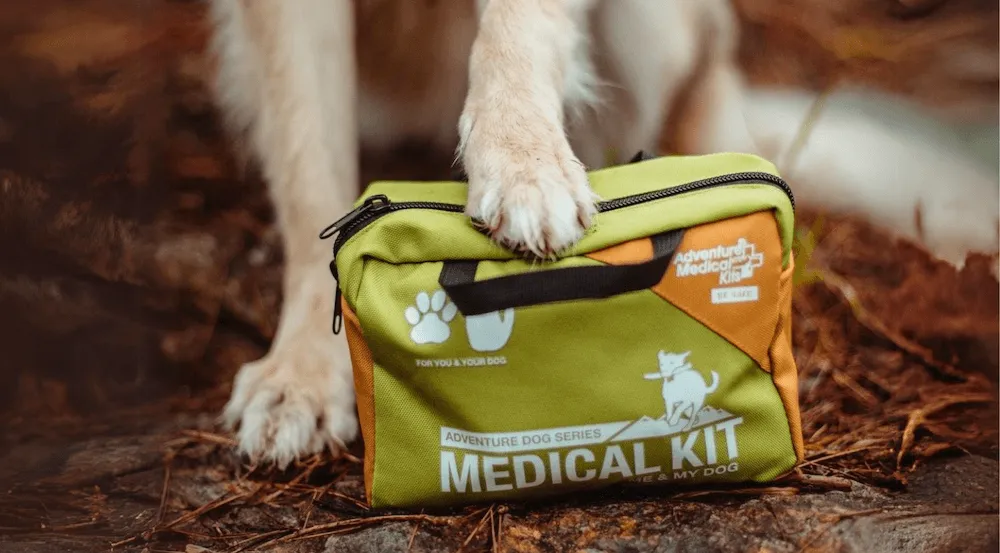
When to start hiking with your dog or puppy, how old?
A major part of understanding how to hike with your dog is knowing the appropriate age to start. Puppies are still developing physically, and their joints, bones, and muscles can be damaged by excessive or premature strain. Over-exercising a young pup may lead to lifelong orthopedic issues, which is why it’s important to delay extended or strenuous hiking.
Here’s a simple guideline to follow:
-
Under 4 months: Focus only on basic leash training and socialization during short, flat walks.
-
5 to 6 months: Light hiking on gentle trails may begin, typically limited to 1–2 miles.
-
6+ months: Dogs may be ready for moderate hikes, but check with your vet to confirm readiness.
Even for adult dogs, build up activity levels gradually. Begin with short, low-elevation hikes to increase stamina and get them used to hiking gear. Always observe your dog’s behavior during and after hikes to detect signs of fatigue, soreness, or overheating. The key to safely learning how to hike with your dog is to tailor the intensity and duration of each outing to your dog’s stage of development and physical condition.
6 Tips for Starting to Hike with Your Dog
Getting started with how to hike with your dog can be rewarding, but it does require a thoughtful approach. A smooth introduction to hiking sets the tone for future outdoor adventures and ensures your dog remains safe, confident, and eager to join you on the trail.
To help your dog ease into hiking:
-
Start Slow: Begin with short walks in familiar areas before progressing to local hiking trails. Gradual exposure helps prevent fatigue and builds confidence.
-
Check the Weather: Dogs are sensitive to heat and cold. Aim to hike in cooler parts of the day and avoid harsh weather conditions.
-
Use Positive Reinforcement: Bring treats and offer praise for good leash manners, staying close, or following commands.
-
Take Frequent Breaks: Dogs need rest, hydration, and mental stimulation. Allow them to sniff, explore, and recover along the way.
-
Respect Trail Etiquette: Always leash your dog unless the area permits off-leash hiking. Pick up after them and carry waste until you find a trash bin.
-
Know the Trail Rules: Some trails may prohibit dogs or require leashes at all times. Check regulations beforehand to avoid surprises.
Following these simple yet effective tips will help you build a positive and lasting routine as you learn how to hike with your dog. Keeping your dog’s comfort, safety, and behavior in mind will lead to more enjoyable hikes for both of you.
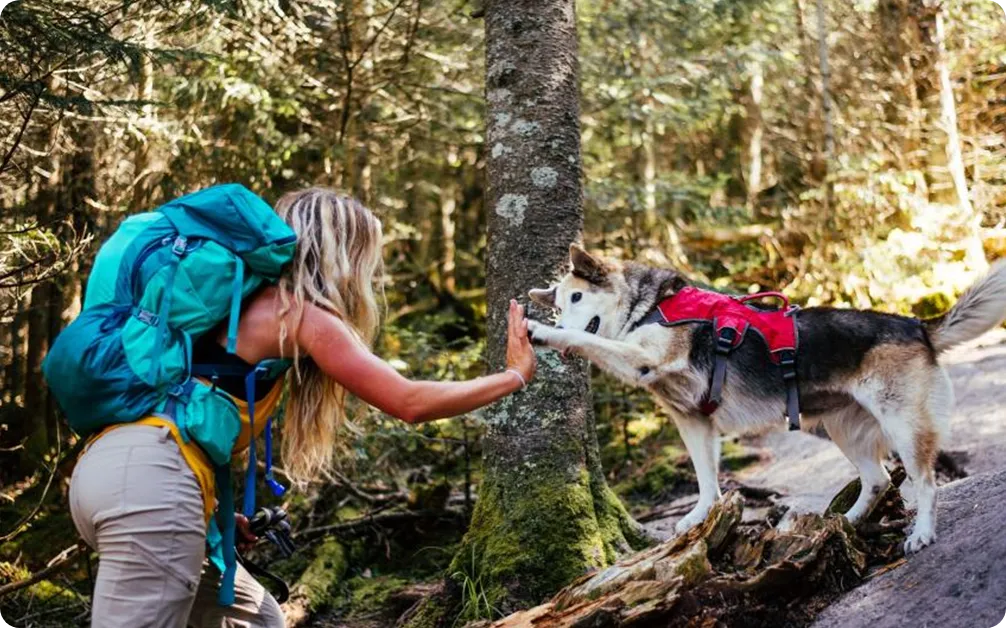
Hiking with your dog timeline
To truly master how to hike with your dog, it helps to understand what’s appropriate at different life stages. Here’s a basic guideline by age range:
3–4 months old
This is a developmental phase where your primary focus should be on socialization and light exposure to outdoor environments. At this age, dogs are not physically ready for traditional hikes. Instead, take your puppy on short walks, 5 to 10 minutes on flat, soft ground such as grassy parks or forest paths.
-
Prioritize leash training and introducing commands like "heel" and "stay."
-
Use these walks to safely expose your pup to new smells, sounds, and people.
-
Avoid rocky paths, stairs, or uneven terrain that could strain growing joints.
Learning how to hike with your dog begins with patience at this stage. The goal is to build confidence, not endurance.
5–6 months old
Dogs at this stage have developed enough to start light trail experiences, typically no more than 1–2 miles on level terrain. Short hikes can help condition their muscles and introduce gear like harnesses and basic packs.
-
Stick to cooler parts of the day and monitor energy levels closely.
-
Introduce gear gradually so your dog learns to walk comfortably with it.
-
Take frequent breaks, even if your dog seems energetic.
6 months and up
By now, many dogs are ready to handle longer hikes, but the transition should be gradual. Pay close attention to breed, energy level, and behavior to avoid pushing them too soon.
-
Increase distance and elevation slowly over multiple hikes.
-
Watch for signs of fatigue, such as heavy panting, slowing down, or reluctance to continue.
-
Continue reinforcing trail etiquette, leash manners, and hydration breaks.
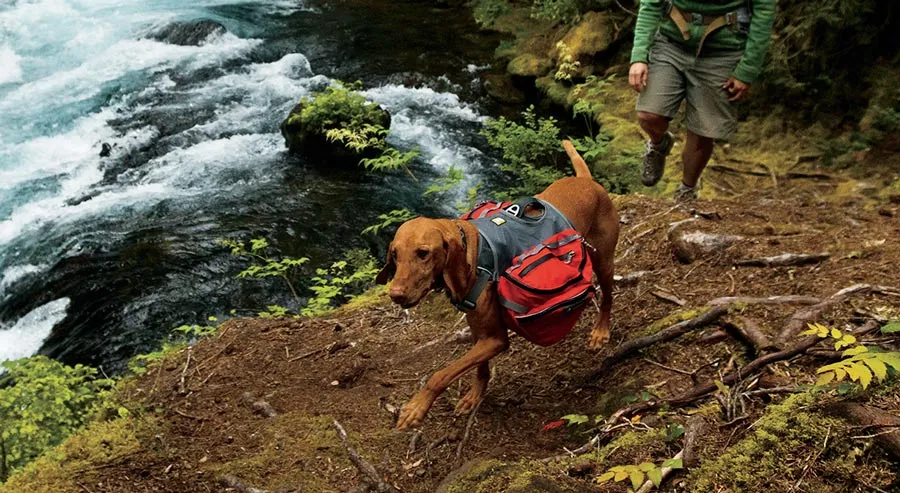
Conclusion
Knowing how to hike with your dog opens the door to countless adventures and lasting memories. With the right preparation, gear, and timing, hiking becomes a shared journey of exploration and bonding. From selecting age-appropriate trails to choosing the best gear, each decision plays a key role in your dog’s comfort and safety.

